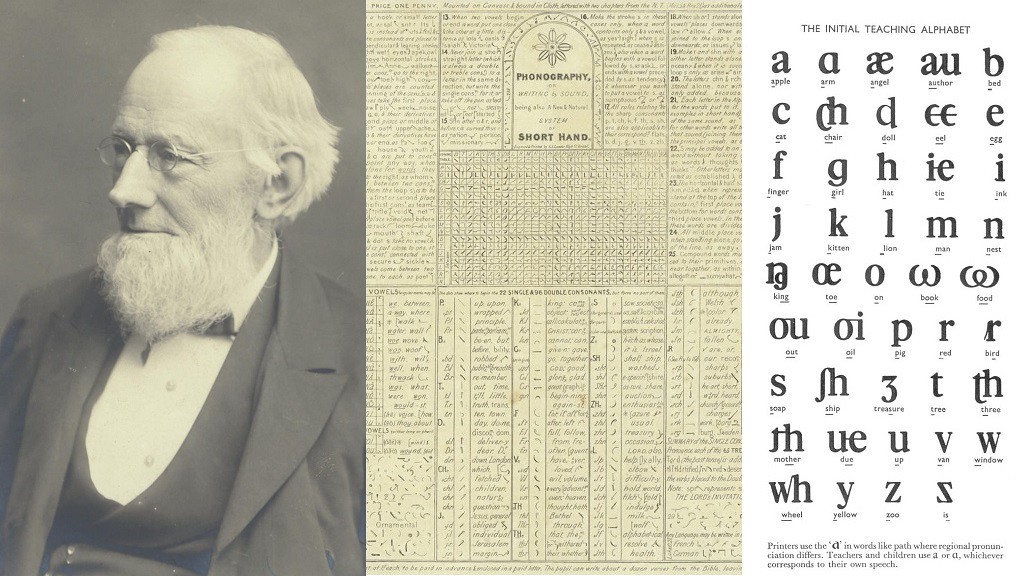The collection is based on the library, correspondence and papers of three generations of the Pitman family; Sir Isaac Pitman (1813-1897), the inventor of a globally adopted shorthand system; his sons, Alfred (1862-1952) and Ernest Pitman (1864-1948), directors of the Pitman printing and publishing business; and his grandson, Sir James Pitman (1901-1985), MP for Bath and campaigning educationalist. It includes a wide range of material dating from the 16th century to the 1980s broadly grouped into the four main subject areas described below.
The shorthand section of the collection was transferred as a gift to the Library in 1970. The records of the Initial Teaching Alphabet Foundation were donated by Sir James Pitman in 1977. Supplemental donations from the Pitman Company and private individuals, including members of the Pitman family, were received throughout the 1980s.
The archival material is not yet fully catalogued. Please email the University Archivist for further details.
View all books in the collection.
Size: 6000 published works and over 3500 archival items (approx).
Specialist advice and professional Pitman shorthand transcription services are available from here.
Shorthand and phonography
Sir Isaac Pitman, who was born in Trowbridge, Wiltshire, trained and worked as a teacher but is best known for the invention of a phonetic system of shorthand. 'Stenographic Soundhand' quickly became widely popular and commercially successful. The collection contains material relating to the design and development of his new system of shorthand writing, the establishment of a Pitman family business based on shorthand instruction and promotion, and the management of an expanding printing and publishing empire. Sir Isaac Pitman's comprehensive collection of shorthand-related books and journals is also held in the Library.
A catalogue providing full details of material relating to phonographic shorthand in the Pitman Collection is available in PDF format.
Initial teaching alphabet (ita) and spelling reform
Sir James Pitman was MP for Bath between 1945 and 1964 and served on the boards of several large public companies while working as a campaigner for educational reform. He was Pro-Chancellor of the University of Bath from 1966 to 1981. The collection contains records relating to the initial teaching alphabet (ita), a phonetically augmented alphabet designed to minimise the discrepancies between spelling and pronunciation that can cause problems in the early development of reading skills. In 1963 the Initial Teaching Alphabet Foundation was established to realise the teaching potential of ita and by 1970 it was being used in approximately 4000 schools in the UK as well as teaching projects in North America, Australia and Africa.
A catalogue providing full details of material relating to ita in the Pitman Collection is available in PDF format.
George Bernard Shaw and the Shavian alphabet
As a result of his growing interest in the phonetic reform of the alphabet, Sir James Pitman was invited to become a trustee under the terms of the will of George Bernard Shaw (1856-1950). His duties in this capacity included involvement in the administration and judging of a competition, devised by Shaw, to design an improved, more economical alphabet. The collection contains over 400 entries from around the world (ranging from published texts to single sides of writing paper), material relating to the transliteration of shorthand notes by Shaw and disputes arising from conflicting interpretations of his will.
A catalogue providing full details of material relating to the New British Alphabet Competition in the Pitman Collection is available in PDF format.
Biographical material
The collection also contains biographical and personal material relating to members of the Pitman family. It includes notebooks, private correspondence, financial records, photographs, press cuttings and commemorative tributes.
A catalogue providing full details of biographical material in the Pitman Collection is available in PDF format.
